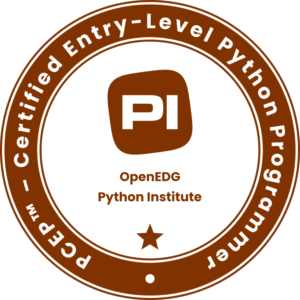Python Flow Chart
Course Length: 2 days
Overview
Python® is one of the most widely used languages in software development today, particularly within the fields of data science, machine learning, and web development. Seasoned programmers and new programmers alike can apply Python skills to accomplish many different business goals. Python is an excellent choice of language for most professionals, and it's especially valuable as a first language for anyone wanting to get into programming.
In this course, you will apply the fundamentals of the Python 3 language and create simple scripts that process data types and structures; interact with the user; perform tasks based on decision-making logic; structure code for reuse; and handle errors.
Course Objectives:
In this course, you will develop simple command-line programs in Python. You will:
- Set up Python and develop a simple application.
- Perform operations on simple data types, including strings and numbers.
- Perform operations on data structures, including lists, ranges, tuples, dictionaries, and sets.
- Write conditional statements and loops.
- Define and use functions, and perform basic exception handling.
Target Student:
This course is designed for anyone with basic end-user computing skills who wants to start learning the Python programming language in preparation for developing a wide range of applications.
This course is also designed to assist students in preparing for the Python Institute's PCEP™ – Certified Entry-Level Python Programmer (PCEP-30-02) credential.
Prerequisites:
Some experience programming in an object-oriented language is helpful, but not required. This course will be useful to anyone new to programming.
To ensure your success in this course, you should have at least a foundational competence with personal computing.
Setting Up Python and Developing a Simple Application
- Set Up the Development Environment
- Write Python Statements
- Create a Python Application
- Prevent Errors
Processing Simple Data Types
- Process Integers and Strings
- Process Decimals, Floats, and Mixed Number Types
Processing Data Structures
- Process Ordered Data Structures
- Process Unordered Data Structures
Writing Conditional Statements and Loops
- Write Conditional Statements
- Write Loops
Using Functions and Handling Exceptions
- Define and Call Functions
- Perform Basic Exception Handling

